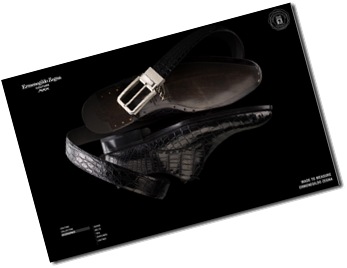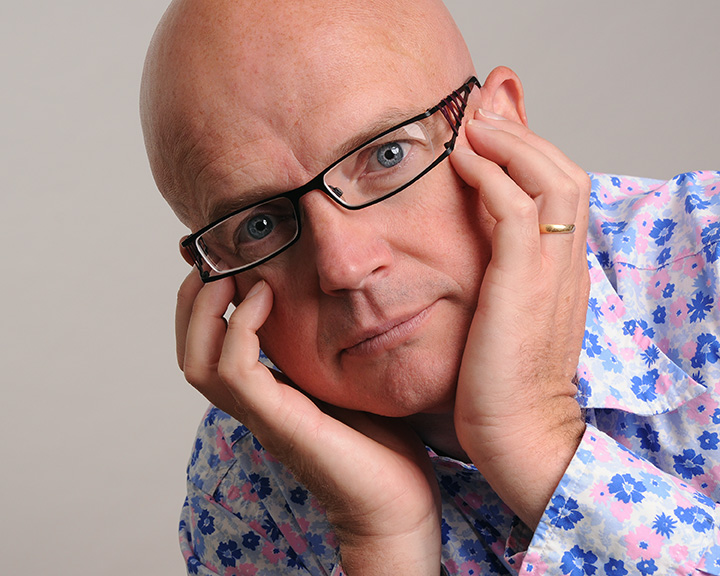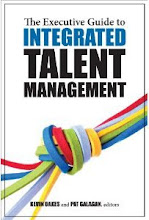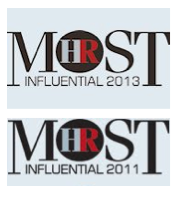 My second conversation following the Enterprise 2.0 Forum in Milan (I just didn’t manage to write it up before / while I was in Boston) was with Lynda Tyler-Cagni who also presented at the conference. Lynda was until recently Group Head of HR at Ermenegildo Zegna.
My second conversation following the Enterprise 2.0 Forum in Milan (I just didn’t manage to write it up before / while I was in Boston) was with Lynda Tyler-Cagni who also presented at the conference. Lynda was until recently Group Head of HR at Ermenegildo Zegna.
I asked Lynda about what HR 2.0 means for her:
It’s not totally new. It’s a label for something that’s been going on for some time. Organisations have been trying to get rid of the old command and control model but it’s never completely happened and the new 2.0 tools are now accelerating the change.
It’s about building collaborative enterprises and HR can play a big role in enabling this. And it’s a train that’s already left the station – HR needs to get on board quick.
The tools also support clear metrics in a way we didn’t have before. It means HR can balance anecdotes from employees with quantitative data – from social network analysis, use of blogs and so on – which is very helpful.
Zegna has also started using these tools to support HR management:
Even before the use of these tools, collaboration had already been a big theme for Zegna. The company previously operated as a number of silos in milling, manufacturing, product development etc. In 2006 there was a new focus on being a luxury lifestyle brand and because of this we needed everyone to be on the same hymn sheet, focusing on the customer in our 500 retail boutiques.
We worked on a big reorganisation – not a traditional slash and burn, but a new organisation model focused on increasing collaboration, creating a new partnership between regions and the centre to focus on putting the customer first. A key part of this change program, was creating trust and a shared vision across the company through the use of dialogue. So we took the people in the central and product areas and got them to visit different markets, have them sit in the market place and listen to what the customer was saying through the sales and marketing people.
This program which was accompanied by a number of other carefully designed interventions, enabled Zegna to make what was seen as the biggest change ever in its’ 100 year history.
However if the social media tools that Zegna has now introduced , had been available then, they would have had an important affect. Some of the HR resource used to encourage networking could have been avoided and we would have saved a huge amount of time and expense for meetings and travel. I do not believe that social media can ever substitute completely for face-to-face contact to build relationships, but tools such as network analysis, on-line communities and blogs could be very instrumental to any change program.
And Zegna now has social media tools – a new 2.0 intranet. It’s not completely up and running but it’s already supporting a lot. Anyone can blog and this is helping to link the field and the centre, so for example, a Brand Director can get live feedback from the market - thus saving six months in the product development cycle. Previously, they’d only get feedback at the end of a sales campaign.
And it’s using 2.0 in the learning arena. We were already using e-learning and had started implementing a social learning approach. For example in Zegna’s leadership development programme key up and coming executives, we introduced a global development programme that includes classroom modules and an action learning project. It’s enabled by webinars and a community space on the intranet that these leaders can use to collaborate. It creates a network of people around the world who can work on projects together and carry on working as a community afterwards.
Another benefit is that this blended approach enables everyone to have a voice. Often Europeans and Americans tend to dominate in the classroom. Zegna’s biggest market is China and we found getting people from this region speaking in classroom sessions more difficult. Using 2.0 tools means that the balance is better. They can use these tools more effectively.
I asked Lynda how well she thinks HR understands the opportunities of HR 2.0:
There’s not much recognition so this tends to be led by other functions. It’s partly because during the last two years, HR’s been into major restructuring in response to the crisis. It’s not left much time for this sort of thing. But we’re now past the crisis and we can see how these new tools can help our organisations function better. So if HR’s not there, it’s a missed opportunity.
For example, In Zegna we used to have this collaboration event when twice a year, we’d bring Sales and Retail people from across the world together at head quarters, partly to present the new collection, but also for workshops – to discuss our key business strategies and progress. People used to say that the biggest benefits were about cross fertilisation and connecting across the globe.
In the recession, we had to cut this event. So now they fly the product people to to present in the different regions rather than have 100s of people flying into Europe. But this meant that this became a product meeting without the culture building effect. Companies can use web 2.0 to compensate for these sorts of cutbacks – particularly because the days of big travel budgets aren’t likely to return.
And we finished by talking about the steps Lynda would recommend for other HR practitioners wanting to get in on this space:
1. It’s still early days for Zegna but they are ahead of most companies in the fashion industry in this field. Having said that, we did run into trouble early on because we didn’t focus carefully enough on putting appropriate governance structures in place. So I’d recommend that other companies get their governance sorted out right at the beginning or 2.0 can become a scary thing for people. Many senior managers aren’t always internet savvy and they often see it as scary – worrying about information on their performance being made public for example. You need to set up clear boundaries and guidelines, communicate and educate so that everyone understands the rules of the game. This helps make sure that things which can be intimidating to some, cannot be used as road blocks – which can happen otherwise.
2. Secondly, identify the pockets of energy – find out who are the people who are willing to run with it. Start small, conduct experiments, find out what works and use these successes to publicise and sell the whole project. Use the opinion leaders. Find a senior leader who is dying to have a blog – it’s about appealing to their ego as well. And do something very business related so you’ve got some great business cases to justify broader implementation.
3. Communicate and publicise what you’re doing. Make sure everyone knows about your successes, and use these to build up momentum .
4. Do enough preparation. You can’t just give everyone the tools and expect that they’ll go and do it for themselves. You’ve got to identify particular areas and pre-populate with data to make it more interesting for people. If they don’t have anything to look at, people can be sceptical. Personal profiles and popular projects are great places to start.
5. So you need to be very focused, have a long-term game plan so that you don’t end up using many different platforms. Smart companies create one overall platform which means that everything will integrate. Then you can start taking small steps towards this plan. Web 2.0 enables HR people to both support their business agenda and create more appealing places to work at the same time. We should seize this opportunity.
Any thoughts?
My thanks to Lynda for her time and opportunity to discuss what I think is a great case study in HR 2.0.
- Consulting - Research - Speaking - Training - Writing
- Strategy - Talent - Engagement - Change and OD
- Contact me to create more value for your business
- jon [dot] ingham [at] strategic [dash] hcm [dot] com
.





























This is a particularly interesting application of helping individuals engage in and work through change. it does strike me through that one area we need to guard against is creating overload in the brain and thus impacting productivity and creativity. undoing some of the good the social media tools can bring. For more on this look at the work of David Rock in Your Brain at work www.davidrock.net
ReplyDeleteThanks Jan. Hope you enjoyed this - I know you know Lynda from your HR with Guts days and maybe currently too.
ReplyDeleteAnd I'd support your call for readers to visit David Rock's site if they've not done so. His work underpins a lot of my thinking - particularly around blog.social-advantage.com.
Also see: http://strategic-hcm.blogspot.com/2007/09/new-science-of-change.html
Jan - also look forward to meeting you next month.
ReplyDeleteHi Jon - thanks to you and Lynda for sharing this example of HR 2.0, very interesting.
ReplyDeleteThis was chosen as one of the Top 10 HR Transformation articles in June from HR Transformer Blog.
Regards,
Andy